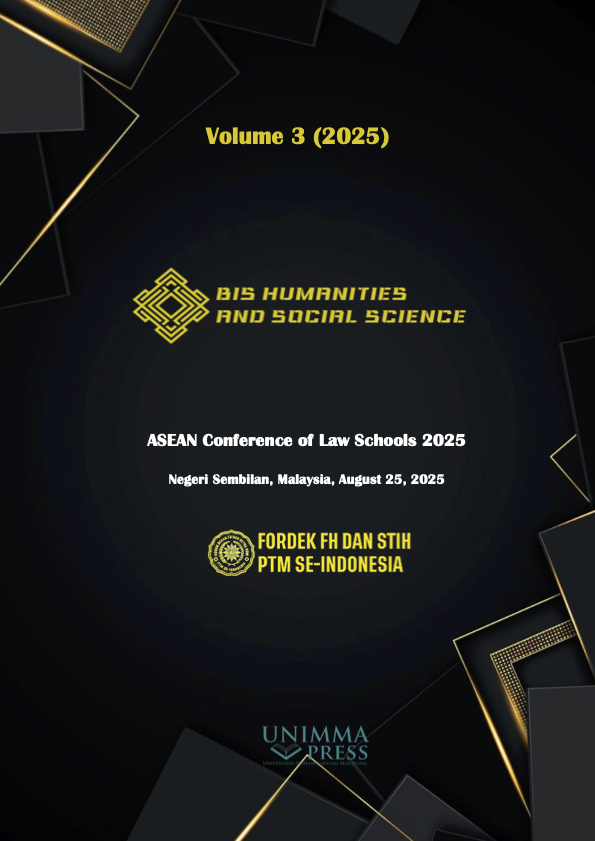The relativism of criminal responsibility age as a challenge in reforming the juvenile justice system
Keywords:
Criminal Responsibility Age, Relativism, Restorative JusticeAbstract
The determination of the age of criminal responsibility for children in Indonesia is a significant issue in the juvenile justice system, particularly with the inconsistency in the age of adulthood between criminal law, civil law, and marriage law. The age of 12, which is set as the minimum age for criminal responsibility, is considered too low compared to the psychological development of children and international standards. This creates legal uncertainty and a dilemma in law enforcement, between protecting children or fulfilling societal justice. This study aims to analyze the relativism of the age of adulthood in juvenile criminal responsibility and the challenges in reforming the juvenile justice system in Indonesia. The research questions raised are how the relativism of the age of adulthood in juvenile criminal responsibility exists and whether the current age of responsibility poses a challenge to the reform of the juvenile justice system. The research method used is normative legal research with a statutory, conceptual, and case approach. The results indicate that the low age of criminal responsibility needs to be reformed, with a higher age set, in order to create a system more aligned with the psychological development of children and international child protection principles.
References
[1] Ansori, Criminal Justice System of Children in The Law Number 11 of 2012 (Restorative Justice), Journal Rechtsidee, Vol. 1, 2014
[2] Ansori, Criminal Justice System of Children in The Law Number 11 of 2012 (Restorative Justice), Journal Rechtsidee, Vol. 1, 2014
[3] Ben Mathews, Children’s Criminal Responsibility In Australia Some Legal, Psychological And Human Rights Issues, Australia & New Zealand Journal of Law & Education, Vol 5, No 2, 2000
[4] Bench, L., & Allen, T. D. Investigating the stigma of prison classification: An experimental design. The Prison Journal, Volume 83, 2003
[5] Damanhuri Fattah, Teori Keadi Lan Menurut John Rawls, Jurnal TAPIs Vol.9 No.2, 2013
[6] Ernawati, Child Participation In Marriage Dispensation In Southeastasian Muslim Countries From The Perspective Of Theconvention On The Rights Of The Child, Journal Of World Science, Volume 2 No. 8, 2023
[7] Hadibah Zachrah Wadjo, The Law Protection for the Woman Victim of Violence on Traditional Marriage, journal SASI, Volume 28, 2022
[8] Hardianto, The Effectiveness of Law Enforcement on Child Protection for Cybercrime Victims in Indonesia. Journal of Physics, Conf. Series 1028, 2018
[9] Karin Arbach-Lucioni, Risk Factors For Violent Behavior In Prison Inmates, Criminal Justice And Behavior, Vol. 39 No. 9, 2012
[10] Secsio Jimec Nainggolan, “Analisis Yuridis Penentuan Kedudukan Saksi Pelaku Sebagai Justice Collaborators Dalam Tindak Pidana Narkotika Di Pengadilan Negeri Pematang Siantar (Studi Putusan No: 231/Pid.Sus/2015/PN)” USU Law Journal, Vol.5. No. 3, 2017
Downloads
Published
Conference Proceedings Volume
Section
License

This work is licensed under a Creative Commons Attribution-NonCommercial 4.0 International License.

